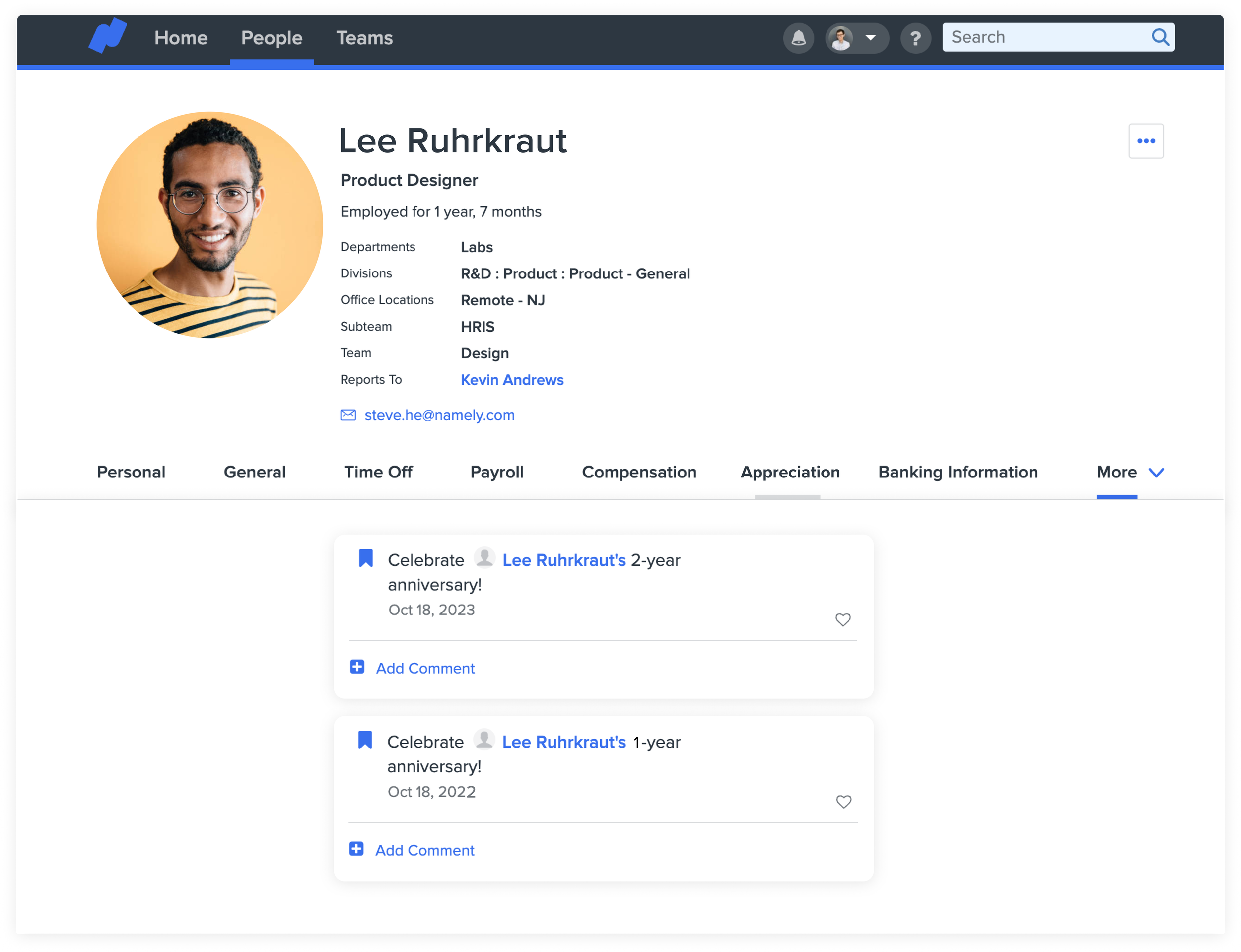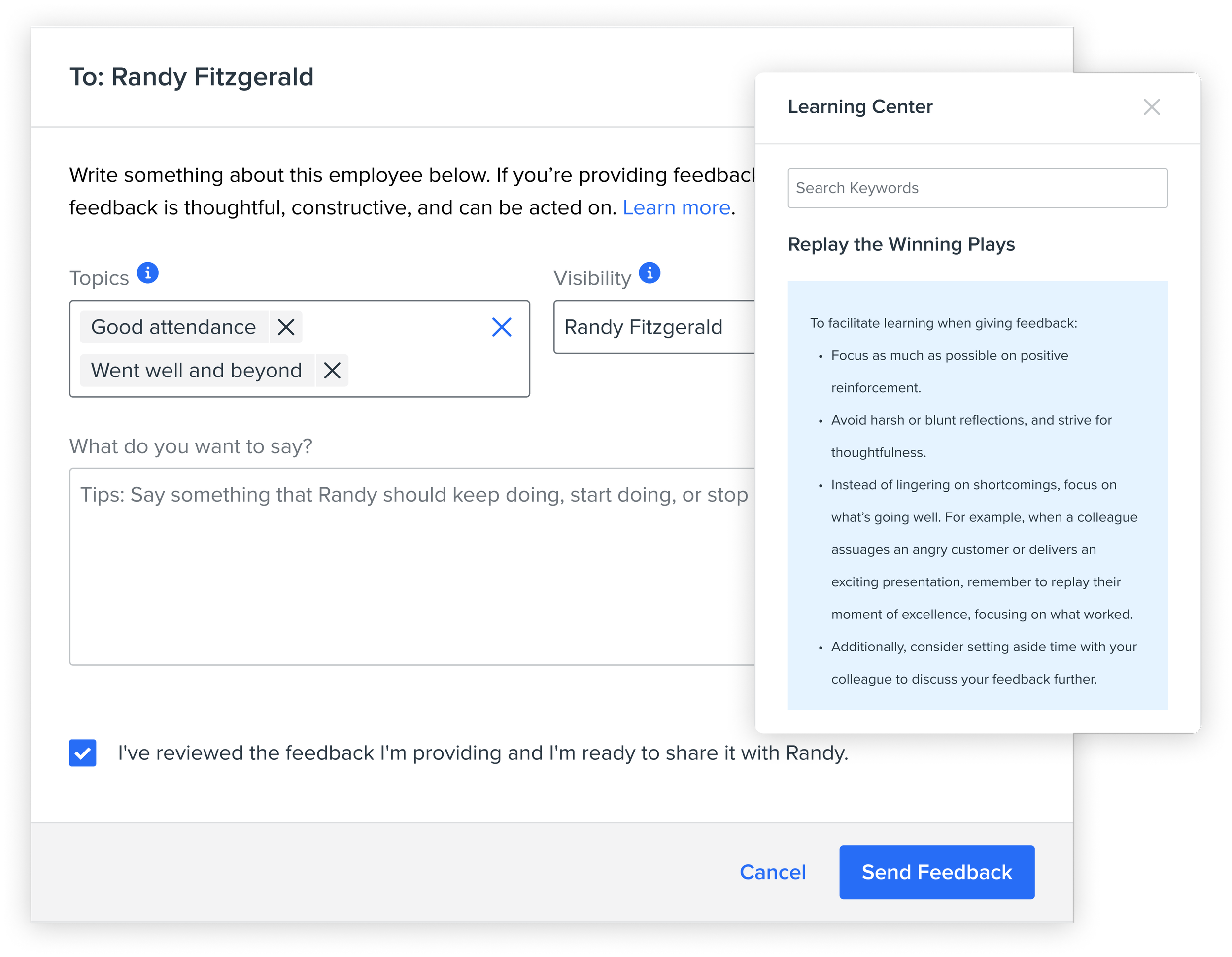Real-time Feedback
We used to be hailed as the “Facebook of HR,” but when the pandemic hit, our once-thriving performance tool lost its spark—and with it, many of our customers. That’s when I stepped into a high-stakes project to reimagine real-time feedback from the ground up. Little did I know, this initiative would do more than just reignite user engagement: it would unleash a new product strategy that transformed us from a simple HR platform into a catalyst for organizational growth.
Story 1: Bridge the Strategy Gap
Due to covid, most of our customers changed their working behaviors as everyone was disconnected. But our current performance tool failed to keep up with their changing needs.
How Others Interprets the Data
The marketing team revealed that the performance tool had high user request but low user engagement, with many clients unsubscribing due to performance-related issues. But at the outset of the project we didn’t have a clear mission or specific goals. Without enough insights, I partnered with our researcher to explore how the tools were utilized.
Picking up Insights
We tested the existing performance tools with 10 participants. Our goals were to understand the challenges managers and employees faced as well as their expectations shift.
Managers want a way to track and improve team performance.
Managers are more than happy to help team grow. They want ways to connect with employees, get frequent work updates, and provide effective feedback.
Employees are under pressure to perform better as they need to work from home, but they have limited ways for growth other than virtual 1:1s or annual review.
Employees have limited way to grow in their daily remote work.
Spot the Gap with User-Centric Focus
From the insights, I felt the problem was not simply about a single tool but about the whole user journey. By putting users at the center, I was able to spot the strategy gap that people overlooked: We invested too much in annual evaluation while overlooked ongoing performance needs.
Reframing the Problem
How might we increase user engagement by unlocking ongoing performance growth, while strengthening the connection between managers and employees?
Async Performance Evaluation
Pros
Thoughtful responses
Scalable to large teams
Good documentation
Cons
No real-time interaction
Potential delays
Weaker connection
A flexible, ongoing evaluation process for employees to track achievements and receive feedback, reducing dependence on annual reviews.
1:1 Tool
Pros
Immediate discussion
Trust-building
Structured goals
A structured tool for regular check-ins, guiding goal discussions and development planning to build stronger manager-employee connections.
Cons
Time-intensive
Retrospective focus
Scheduling challenges
Real-time Feedback
Pros
Immediate improvement
Real-time interaction
Enhanced Engagement
An immediate feedback system for quick recognition and constructive insights, fostering a culture of continuous improvement and engagement.
Cons
Risk of overload
Potential superficial feedback
Inconsistent quality
Execute by Exploring Diverse Directions
I started to explore several solutions to those pain points with a goal to connect people and unlock on-going growth. I went into brainstorming and generated 50 different ideas all around those sets of needs.
I picked and presented the most convincing 3 solutions to the team with pros and cons. Through several rounds of discussion, we finally all agreed to move forward with the real-time feedback direction.
Story 2: Craft 0-1 Feedback Experience
Tackle Technical Limitation
At the start of the design phase, I encountered a challenge with the engineering team, who felt that updating the legacy performance platform was too resource-intensive. They proposed building an entirely new module instead.
Mission to Find Compromise
Appreciation
76% of users received at least 1 appreciation
While easier to implement, a new module would harm the user experience by adding ambiguity and complicating to the product. I understood the engineering team’s focus on efficiency but felt responsible for advocating for the user. I decided to find a middle ground, balancing user needs with development constraints to achieve the best solution for both sides.
I went back and looked for other areas of the product that this feature could be integrated into. And then Appreciation made sense because there was a lot of overlapping functionality: create post, share and response. Also, adding that to the profile page made sense because profile is part of the appreciation user flow with better traffic and engagement.
Profile Page
20% of users’ time is spent on profile page.
Should we couple real-time feedback with the existing appreciation feature on the profile page? Yes, let’s do it!
Working Backwards from Perfect
Making People Better Managers
Feedback is mainly a management practice, so making people better managers is the key to high-quality feedback. I reversed the polarity of the imperfect manager/employee feedback experience to jumpstart creativity. The key design challenge emerged: How might we guide managers to provide and respond feedback in a structured way as well as in timely manner?
I don’t think the feedback is usually clear to me and this made me hard to respond.
Ambiguous - Attentive
Exploring Guided and Structured Feedback
Ver 1 - Generic
Ver 2 - Guided
Oh, I’m not good at giving constructive feedback.
How should I encourage further employee growth?
Daunting - Seamless
Design Vision
Connecting managers with employees isn't just about giving feedback—it's about giving high-quality feedback.
Giving Good Feedback is Hard
44% Managers are giving poor feedback.
69% Employees can perform better when they receive high-quality feedback
I was so busy recently and forgot to give team their feedback
I don’t receive the feedback quite in time.
Delayed - Timely
I began with a simple, open-ended feedback prompt structured with included topics, visibility settings, and feedback types. However, many users struggled with what to share, resulting in vague responses and low completion rates.
To address this, I added contextual hints and guidance to reduce friction, and provide more knowledge based supported. However, user test revealed that user responses still lacked structure, impacting the overall quality of feedback.
Building on these insights, I introduced customizable feedback templates designed to promote clarity and effectiveness. This approach resonated strongly with users, leading to a +40% increase in Feedback Completion Rates and a +60% boost in Feedback Effectiveness.
Ver 3 - Templated + Guided
+40% Feedback Completion Rate
+60% Feedback Effectiveness
It’s hard to act on the feedback that have little guidance.
Exploring Guided and Structured Response
Ver 1 - Generic
I reached out to the designer from the other team to communicate the idea of creating a new feedback card due to the consideration of unification and the limited capability of the current one.
The most important thing to consider was the response. Although feedback has been effective, manager/employee still needs to continue the conversation for clarification, confirmation and further growth. The generic response in ver 1 failed to meet a higher s.
To address this, I introduced preset response template that guided users through recommended pathways like “Acknowledge,” “Ask Clarifying Questions,” “Take Action,” and “Follow Up.” This small but impactful change empowered users to respond with confidence and les friction, leading to a +45% increase in response rates.
Ver 2 - Structured
+45% Response Rate
Exploring Timely Flow
Final Design
+50%
User Engagement
+18%
Employee Performance Rating
I also designed a streamlined workflow enabling managers to provide timely feedback and seamlessly reference it during annual evaluations. By optimizing the process for minimal steps, I improved efficiency and achieved a higher completion rate.
Result
+1%
Market Win Rate
Story 3: Up-level the Tool for the Market
While the product experienced significant growth in user engagement and employee performance ratings, we still can’t win the market.
Learning the Market
Potential Clients Would Pay for What Drives Their Org Change
Real-time feedback drove immediate improvements but our potential clients(mostly executive) focus more on the org level performance change.
To dig deep into this problem, I partnered with our researcher to talk with potential customers, marketing team and PM. Our goals were to understand the challenges potential clients faced as well as their expectations. As a result, we found out a high-level need: drive high-performance culture, and organizational change! I also studied competitors on the market, and the dashboard (data) seems the right direction.
Mission to Up-level Our Service
So it’s time to up-level our service! I shared the findings with the team, focusing on a higher goal: shifting the product’s perception from a management tool to a driver of organizational change. I also highlighted the power of data to unlock the full potential of feedback activities. As a result, the team aligned on a new strategy: leveraging feedback data to drive organizational transformation.
I collaborated closely with the PM and our power users to uncover the most impactful performance metrics that align with organizational goals. Together, we explored methods to effectively measure feedback activities and analyzed how these activities correlate with key performance indicators. By understanding these relationships, we aimed to identify actionable insights that could demonstrate the value of feedback in driving measurable organizational improvements.
Performance Rating
Core Metrics, Leadership, Work Quality, Productivity, Behavioral
Feedback Impact
A score measures how effectively feedback drives performance improvements.
Based on the metrics, I selected the most meaningful data to display feedback activity. Meanwhile, I redesigned data viz components for better readability
+50% Data Insight Efficiency
Define the Problem
How might we drive org change with feedback data?
Extracted the Most Meaningful Metrics
Feedback Activity
Quality, Quantity, Timeliness, Engagement, Effectiveness, Diversity.
Select Meaningful Feedback Data
Correlate Feedback Data with Org Performance
Feedback Activity
Performance Rating
I designed 2 KPI bars to display the correlation between feedback and performance. They allow admins gain actionable insights of org change and ensured
+80% Data Impact Efficiency
Explore in-depth: Side-by-side Comparison
Recognizing that many insights remained hidden beyond the capabilities of the data graph and KPI bar, I explored a comparison experience to help users delve deeper into the data. I opted for a comparison mode as a solution, given the absence of a dynamic framework that would allow users to drag and drop components.
Final Design
+20%
Org Performance Rating
+15%
Market Win Rate
Result
Story 4: Scale the Design Patterns
New Patterns
The complex nature of the app necessitated more than 30 screens covering Creating Feedback, Managing Feedback, Dashboard and Permission Setting.
To maintain consistency and ensure efficient design to dev handover, I developed several reusable components and their states, such as cards, list items, and controls. Every component can be rearranged and combined with others while maintaining design consistency and recognizable UI patterns for the user.
Story 5: Leveraging AI to make the original ask better
Namely AI
It’s time to really differentiate us with others. AI gives us superpower to get more things done. Content creation by Namely AI is good to go! Real-time feedback is the perfect testing ground!













































